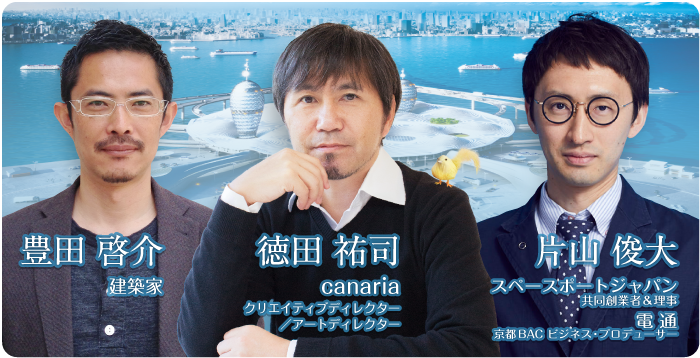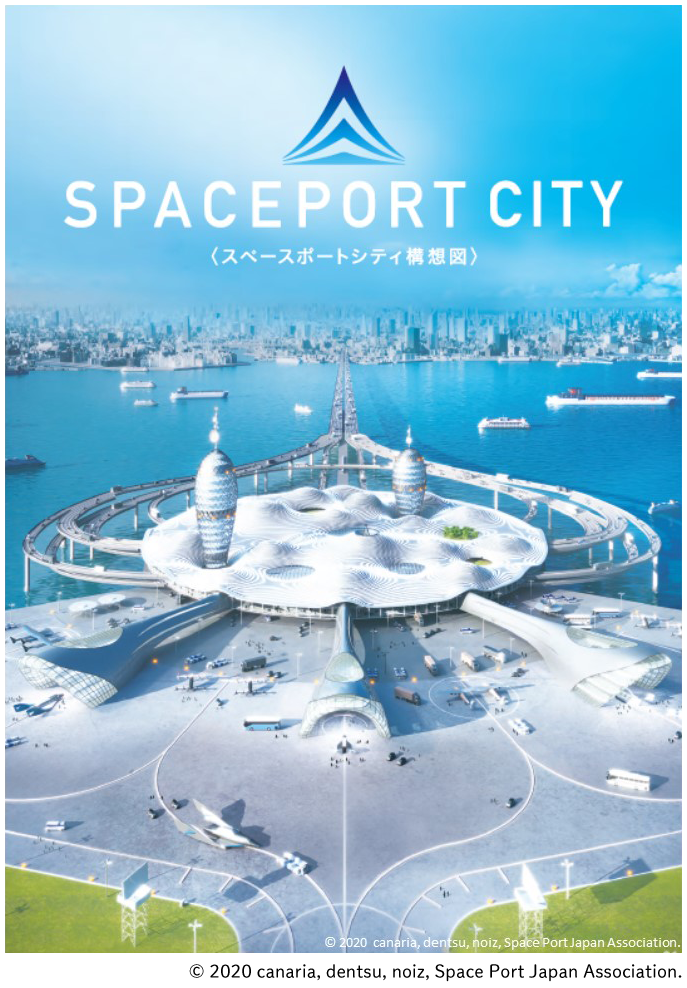Did you know a project is currently underway to build a "spaceport" in Japan where manned spacecraft will take off and land?
As the first step toward realization, Space Port Japan (SPJ), the general incorporated association driving this project, and Dentsu Inc. held workshops gathering various companies and organizations. They compiled the ideas generated there and announced the "Spaceport City Concept Diagram" in June.
This time, we feature Creative Director Yuji Tokuda and Architect Keisuke Toyoda, who worked on the concept map. Toshihiro Katayama, who founded SPJ, asked them about the key points of the concept map and their thoughts on this project.
■ "Spaceport City Concept Diagram" (Complete Version)
https://www.spaceport-japan.org/concept
Katayama: To briefly explain the background of creating this concept diagram: In the space industry, projections suggest tens of thousands of people worldwide will travel to space within the next decade. Consequently, many countries are advancing the construction of spaceports as departure and arrival points.
However, when we established SPJ in 2018, activities aimed at realizing a spaceport in Japan were scarce. That's why we launched this organization together with astronaut Naoko Yamazaki and others. SPJ aims for Japan to become Asia's hub for the space tourism business.
As the first step of the project, member companies of SPJ gathered for a workshop to brainstorm ideas about what kind of spaceport we wanted to create. Mr. Tokuda's advice, "Imagine the various people who will visit the spaceport and think about how they might spend their time there," really broadened the scope of our ideas.
Tokuda: For Spaceport City, as a prerequisite for business creation, we imagined not only those going to space, but also those seeing them off, visitors, and various other people coming. We brainstormed what facilities would be needed for that and had a lively exchange of ideas. The workshop also gave birth to the concept of a "city," which became a major catalyst for expanding our vision. It wasn't about building something like an airport, but creating entirely new infrastructure. And my biggest mission as a designer was to synthesize everyone's vision for the Spaceport City into a conceptual blueprint.
Toyota: I joined at the conceptual drawing stage, and everyone had already discussed various ideas in detail, like "It shouldn't be a building standing alone on empty land, but part of a waterfront, integrated into the city..." Translating that image into a single drawing was a fascinating challenge, but the bar was set very high. The output was a single image, but it couldn't be just a concept sketch. It had to be something where, if someone looked at the details and asked, "What's this?", I could properly explain it. A significant amount of design work was needed behind that single image. To put it in perspective, it felt like writing an entire novel but only being able to publish a single-page book review.
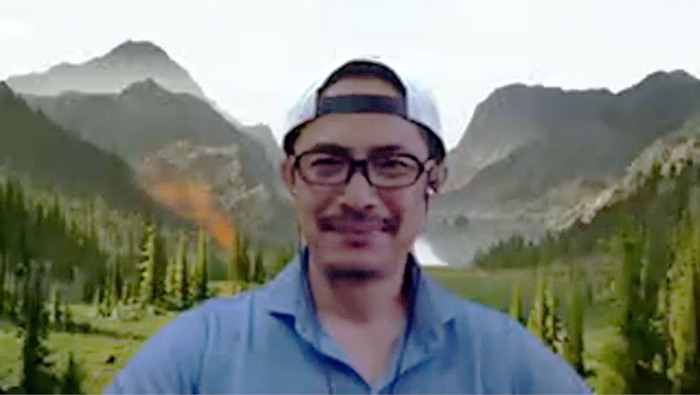
Remote interview session (Mr. Toyoda)
Katayama: What aspects did you two find particularly challenging in realizing this concept?
Tokuda: Striking the right balance between a "futuristic feel" and a "realistic feel." If you draw something too unrealistic, it loses credibility, but if it's too realistic, it loses its freshness.
Toyoda: Mr. Tokuda and Dentsu Inc. emphasized this point repeatedly. They wanted it to feel like a building that wouldn't look out of place on a live morning news broadcast, not a fantasy structure (laughs). The gently undulating rooftop landscape we designed also incorporates the intention of creating beautiful shadows under the low morning sun.
Tokuda: The perspective rendering of the completed design you created, Toyoda-san, included every detail—people, cars—making Spaceport City feel like it already existed. Like waking up one morning to find something that wasn't there yesterday had suddenly materialized...
Toyoda: Exactly. I designed it while imagining the dazzling light of morning, like the start of a new day.
Tokuda: When noiz's perspective drawings came in, everyone exclaimed, "Wow!" Seeing not just the buildings, but the surrounding roads and bridges spanning the bay, I think it truly conveyed to the world that the Spaceport City concept isn't just about building a spaceport, but a grand project that will create various businesses, including the development of surrounding infrastructure.
Spaceport City is a place to reexamine the potential of Earth and humanity.
Katayama: With the Spaceport City concept complete, this project is moving into its next phase. What are your thoughts on this project?
Tokuda: I feel that once space travel becomes possible, ordinary people will finally gain a second perspective—a so-called "another eye"—allowing them to view Earth not only from the ground but also from space, in a real and objective way.
Katayama: Astronaut Naoko Yamazaki said her perspective on life changed after going to space. Especially upon returning to Earth, she felt the wind and the scent of greenery, realizing how incredibly precious things she had taken for granted truly were. She was deeply struck by how amazing Earth is.
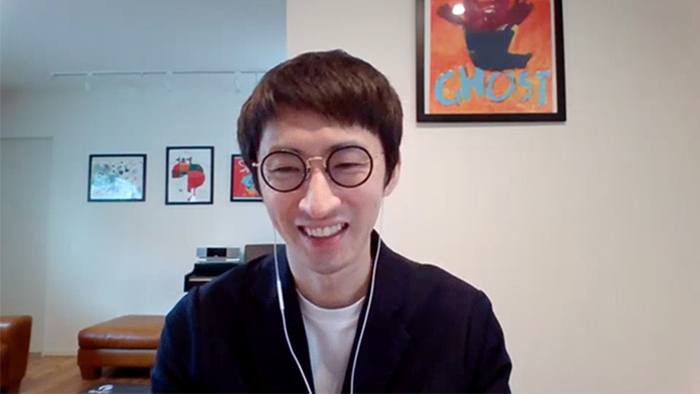
Remote interview scene (Mr. Katayama)
Tokuda: That experience must be truly irreplaceable. By going to space, one gains this "another eye" – the ability to reimagine Earth and humanity's future while questioning what we should do next. Moreover, an era is coming where not just a select few like NASA astronauts, but even children can gain this perspective.
Toyoda: In terms of re-examining the potential of Earth and humanity, the spaceport itself could become a shared platform—a "common ground" where physical and digital realms intersect. For example, people in remote locations could experience space through robots... Creating unique ways to experience space more effectively could explosively expand new possibilities. I believe many companies and individuals will find this aspect compelling.
There's also a business opportunity in offering intermediate travel experiences—not just the binary choice of going to space or not. Even without going to space, visiting a spaceport city could provide hybrid experiences impossible at home, or advanced experiences combining the real world with something extra. Having this common ground opens up many channels, like avatar attendance.
Katayama: Absolutely. Spaceports shouldn't just be facilities for traveling to and from space; they should truly be common grounds where the physical and digital worlds overlap.
Tokuda: While movements to build spaceports are advancing worldwide, what exactly are we trying to create in Japan? Clearly defining and visualizing its meaning will fundamentally change people's expectations for spaceports. In short, it's entirely different from going to a regular airport.
Katayama: As Mr. Toyota and Mr. Tokuda mentioned, combining the real and virtual worlds creates infinite possibilities. However, pushing it too far risks entering the realm of science fiction. We also need to focus on how to translate this into tangible industries and businesses. We must anchor it in a world where people think, "If we set our minds to it, we can make it happen." That should naturally lead to various business opportunities.
Toyoda: We must build new business models going forward, and for that, vision, theoretical frameworks, and R&D become crucial. But this can't be done by a single industry or company alone. Having players like Mr. Tokuda who can translate this into a vision is already an advantage. If researchers responsible for technical logic and development join in, I believe we can create something unique that other countries don't have.
Katayama: Thanks to everyone's support, the Spaceport City concept has received positive feedback, and I'm seeing more people wanting to join us. Finally, could you both share a message?
Toyoda: To properly create a vision for a value system that doesn't yet exist and translate it into concrete form, we need to transcend existing frameworks and vested interests through cross-disciplinary collaboration. We sincerely hope many people will join us.
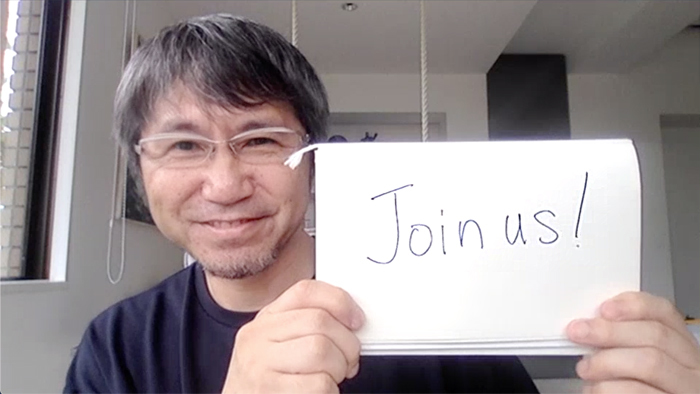
Remote interview scene (Mr. Tokuda)
Tokuda: Japan's national strength is declining right now. But Japan is a nation of manufacturing, and we should have plenty of "implementation power." The Spaceport City concept should become a wonderful project that allows not only stakeholders but also children and many others to dream. Let's make it happen together. Join us!



